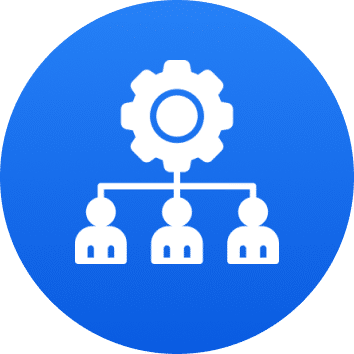
Customer Profile:
A leading enterprise in the audit/tax and consultancy space, serving millions of users with rich multimedia content and seamless digital transactions.
Business Challenge:
The customer faced several challenges with their legacy platform:
- Scalability Bottlenecks: The platform struggled to handle increasing traffic during high-demand periods.
- Data Integration Issues: Communication between the core delivery platform and an internal application for metadata management was inefficient.
- Manual Issue Resolution: Integration with the ticketing system required manual efforts to manage and resolve operational issues, leading to delays.
Solution:
The solution modernized the platform using Azure App Services, Azure Functions, Azure Service Bus, and Azure Storage to create a reliable, scalable, and integrated architecture.
- Azure App Service
- Hosted the web application for managing and delivering digital content.
- Provided a fully managed environment with auto-scaling capabilities to handle high traffic seamlessly.
- Azure Functions
- Metadata Integration:
- Azure Functions were used to fetch and synchronize metadata from the internal application.
- Functions were triggered by messages in Azure Service Bus, ensuring efficient and real-time data updates.
- Automated Ticketing Workflow:
- Azure Functions combined with WebJobs automated issue tracking by creating tickets in the external ticketing system when operational anomalies were detected.
- Improved traceability and reduced human intervention.
- Azure Service Bus
- Acted as the backbone for asynchronous messaging between the core platform and the internal metadata management application.
- Guaranteed reliable delivery of messages even under peak loads.
- Azure Storage
- Blob Storage was used for storing logs and temporary files generated during data synchronization and issue resolution processes.
- Enabled cost-effective, scalable storage for non-relational data.
Implementation Highlights:
- Seamless Data Synchronization: The platform achieved real-time updates by integrating Azure Functions and Service Bus, ensuring metadata consistency across systems.
- Automated Issue Tracking: The integration of WebJobs and the ticketing system reduced delays in identifying and resolving issues.
- Scalable and Resilient Architecture:
- Decoupled architecture ensured individual components could scale independently.
- Azure App Service handled unexpected surges without downtime.
Outcome:
Business Benefits
- Enhanced Platform Performance:
- Improved response times by 35% due to real-time updates and asynchronous processing.
- Operational Efficiency:
- Automated ticket creation reduced manual efforts by 50%.
- Enabled faster issue resolution with automated workflows.
- Scalability and Availability:
- Handled a 300% increase in concurrent user sessions during peak events without degradation.
Technical Gains
- Simplified Integration: Azure Service Bus streamlined communication between applications, ensuring reliable and orderly data flow.
- Lower Costs: Serverless Azure Functions reduced operational costs by 25%.
- Future-Proof Design: Modular architecture allows for seamless addition of new integrations and features.








































